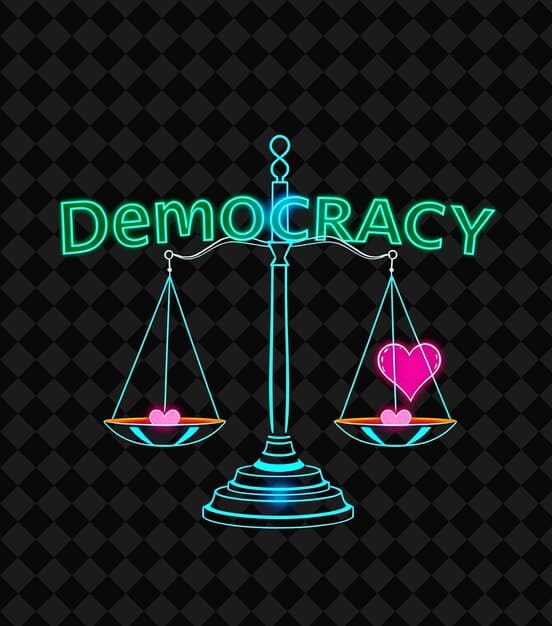Analyzing New Federal Guidelines Impact on Social Commentary Platforms: A 3-Month Review

Analyzing the Impact of the New Federal Guidelines on Online Social Commentary Platforms: A 3-Month Review reveals significant shifts in content moderation, user engagement, and platform policies, impacting freedom of speech and operational transparency over the past three months.
The digital landscape has been buzzing with changes following the introduction of new federal guidelines. This article delves into analyzing the impact of the new federal guidelines on online social commentary platforms: a 3-month review, examining the multifaceted effects on content creators, platforms, and users alike.
Understanding the New Federal Guidelines
To fully grasp the implications, we first need to understand what these new federal guidelines entail. These guidelines represent a significant effort to regulate online content, particularly on platforms that host social commentary.
The core objectives of these guidelines include:
- Combating misinformation and disinformation.
- Protecting user privacy and data security.
- Promoting transparency in content moderation practices.
These objectives aim to create a safer and more reliable online environment, but their implementation has raised several concerns.
Key Provisions of the Guidelines
The new guidelines introduce several key provisions that directly affect online platforms. These include stricter requirements for content moderation, enhanced transparency reports, and increased accountability for harmful content.
Challenges in Implementation
Implementing these guidelines has presented numerous challenges. Platforms struggle to balance freedom of speech with the need to moderate harmful content effectively. Resources and technological capabilities vary significantly among different platforms, leading to uneven enforcement.
In summary, the new federal guidelines aim to regulate online content for safety and reliability, but their implementation faces challenges in balancing freedom of speech and ensuring uniform enforcement across platforms.

Impact on Content Moderation Practices
One of the most significant impacts of the new federal guidelines is on content moderation practices. Platforms are now under pressure to enhance their moderation capabilities and enforce stricter policies.
Platforms are adapting in the following ways:
- Investing in AI-driven moderation tools.
- Expanding human moderator teams.
- Implementing clearer and more consistent content policies.
These changes are intended to reduce the spread of harmful content and create a safer online environment.
The Role of AI in Content Moderation
AI plays a crucial role in moderating content at scale. AI algorithms can detect and flag potentially harmful content for human review, helping to manage the vast amounts of data generated daily on social platforms.
Challenges in AI Moderation
Despite its potential, AI moderation is not without its challenges. AI algorithms can sometimes misinterpret context or fail to understand nuanced language, leading to false positives or negatives. Ensuring fairness and accuracy in AI moderation is an ongoing effort.
In conclusion, the new guidelines have pushed platforms to enhance content moderation through AI and human efforts, but challenges remain in ensuring accuracy and fairness in these processes.
User Engagement and Content Creation
The new guidelines also influence user engagement and content creation on these platforms. Stricter content moderation policies and increased transparency can impact how users interact with online content.
Several impacts on users and creators are observed:
- Changes in Content Tone: Some creators are shifting towards less controversial topics.
- Engagement Dynamics: Discussions have become more cautious, and some users are self-censoring their comments.
- Rise of Alternative Platforms: Dissatisfaction with mainstream platforms has led some users to create alternative spaces with fewer restrictions.
These changes reflect a broader shift in the online social landscape as a result of the new federal guidelines.
Content Creator Perspectives
Many content creators have expressed concerns about the new guidelines. Some worry that stricter content moderation policies stifle creativity and limit freedom of expression. Others support the guidelines as a means to create a more inclusive and respectful online environment.
User Behavior and Platform Preferences
User behavior is also evolving in response to the new guidelines. Some users appreciate the stricter moderation policies, while others find them overly restrictive. This has led to a shift in platform preferences, with some users gravitating towards platforms that align with their values and expectations.
Overall, the new guidelines are reshaping user engagement and content creation, leading to changes in content tone, engagement dynamics, and the rise of alternative platforms as users adapt to the new regulatory environment.

Platform Policy Changes and Adaptations
In response to the new federal guidelines, online platforms have had to make significant policy changes and adaptations. These changes are aimed at complying with the new regulations and maintaining a balance between free expression and content safety.
The adjustments include:
- Revised Content Policies: Platforms have updated their content policies to align with the new guidelines.
- Enhanced Reporting Mechanisms: They’ve improved reporting mechanisms for users to flag inappropriate content.
- Increased Transparency: Platforms now offer greater transparency in their content moderation practices, providing explanations for content removals or restrictions.
These adaptations are crucial for ensuring compliance and fostering trust between platforms and their users.
Content Policy Revisions
Revising content policies has been a top priority for online platforms. The updated policies provide clearer definitions of prohibited content and outline specific rules for user behavior. These changes aim to reduce ambiguity and provide a more consistent moderation experience.
Transparency and Accountability
Transparency and accountability are key components of the new federal guidelines. Platforms are now required to publish regular reports detailing their content moderation activities, including the number of content removals, user reports, and enforcement actions. This increased transparency aims to hold platforms accountable for their moderation practices.
The new guidelines have prompted significant policy changes and adaptations in online platforms. These adjustments, including revised content policies and increased transparency, are aimed at ensuring compliance and building trust with users.
Economic and Operational Impacts on Platforms
The new federal guidelines also bring economic and operational impacts for online platforms. Compliance with these guidelines requires considerable investment in technology, personnel, and legal expertise.
Here are some operational shifts:
- Increased Operational Costs: Platforms face higher costs due to expanded moderation teams and AI tools.
- Legal and Compliance Expenses: The need for legal experts to navigate the complex regulatory landscape has increased expenses.
- Potential Revenue Loss: Stricter content policies may lead to a decrease in user engagement and advertising revenue.
These economic factors can significantly affect the viability and sustainability of online platforms.
Investment in Moderation Technology
One of the most significant economic impacts is the need to invest in moderation technology. Platforms are spending heavily on AI-driven systems and other tools to help them identify and remove harmful content quickly and efficiently. This investment is crucial for meeting the requirements of the new guidelines.
Long-Term Financial Sustainability
The long-term financial sustainability of online platforms is also a concern. The increased costs associated with compliance, coupled with potential revenue losses, could strain platform resources and affect their ability to innovate and grow. Finding a sustainable economic model that balances compliance and profitability is a key challenge.
In summary, the new guidelines impact platforms economically through increased operational costs, legal expenses, and potential revenue loss, while requiring substantial investment in moderation technology to maintain long-term financial sustainability.
The Future of Social Commentary Platforms
Looking ahead, the future of social commentary platforms depends on how well they adapt to the new regulatory landscape. Navigating the balance between compliance and user freedom will be crucial.
Trends shaping the future:
- Evolving Regulatory Landscape: Further regulations are expected.
- Technological Innovations: More advanced tools will enhance moderation and user experience.
- Shifting User Expectations: Users will expect greater transparency and safety.
These elements will shape the future of online social commentary platforms.
Potential Regulatory Changes
The regulatory landscape is likely to continue evolving. As policymakers gain a better understanding of the challenges and opportunities in regulating online content, we can expect further refinements and additions to the existing guidelines. Platforms must stay informed and adaptable to keep up with these changes.
Innovations in Moderation Technology
Technological innovations will also play a significant role in the future of social commentary platforms. As AI and machine learning continue to advance, we can expect to see more sophisticated tools for content moderation, user verification, and detecting harmful behavior. These innovations will help platforms better manage and maintain a safe and engaging environment.
In conclusion, navigating the balance between compliance and user freedom is vital for the future of social commentary platforms, with continued evolution in regulations, innovations in moderation technology, and shifting user expectations shaping their trajectory.
| Key Point | Brief Description |
|---|---|
| New Guidelines 📜 | Federal rules aiming to regulate online content. |
| Content Moderation 🛡️ | Platforms enhance practices against harmful content. |
| User Impact 🗣️ | Users adapt with cautious discussions and alternative platforms. |
| Platform Adaptations 🛠️ | Platforms revise policies and enhance transparency. |
Section
▼
The main goals include combating misinformation, protecting user privacy, and promoting transparency in content moderation practices to create a safer online environment.
▼
Platforms are investing in AI-driven moderation tools, expanding human moderator teams, and implementing clearer, more consistent content policies to enhance moderation.
▼
Some content creators are shifting towards less controversial topics, while others worry the stricter policies will stifle creativity and limit their freedom of expression.
▼
Platforms face higher operational costs due to expanded moderation teams, the expense of AI tools, and legal compliance requirements necessary to adhere to the new guidelines.
▼
Future success relies on platforms’ ability to balance compliance with user freedom, adapt to evolving regulations, and integrate advanced moderation technologies and shifting user expectations.
Conclusion
Analyzing the impact of the new federal guidelines on online social commentary platforms over the past three months reveals a complex interplay of challenges and adaptations. Platforms are striving to balance compliance with the preservation of free expression, while users and content creators navigate a changing digital landscape. As technology and regulation continue to evolve, the ability to adapt and innovate will be crucial for the sustainability and growth of social commentary platforms.





